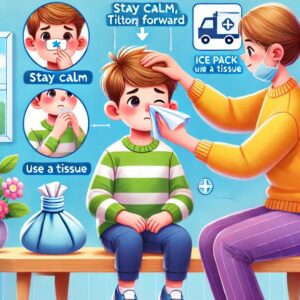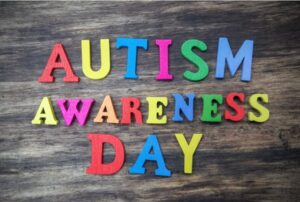On a sunny afternoon, 7-year-old Jack was playing happily with his friends in the park. Suddenly, one of the children shouted, "Jack is bleeding from his nose!" Jack's nose was bleeding, and he became frightened. His friends were also unsure of what to do. For parents, seeing a child with a nosebleed can be alarming, but it’s a common situation that can often be managed quickly and effectively. Knowing the right methods for stopping a nosebleed is crucial. Here are 10 ways to quickly stop a nosebleed in children.
Common Causes of Nosebleeds
Nosebleeds occur when a blood vessel in the nasal passages ruptures. Children's nasal blood vessels are more fragile, making them more prone to nosebleeds. Some common causes of nosebleeds include:
- Dry air: Especially in winter or air-conditioned rooms, low humidity can cause the nasal passages to dry out and crack, leading to bleeding.
- External trauma: Accidental bumps or falls can cause injury to the nose, resulting in a nosebleed.
- Frequent rubbing of the nose: Children may sometimes rub their noses, especially when they have a cold or stuffy nose, which can cause nosebleeds.
- Allergic reactions: Seasonal allergies can make the nasal lining more fragile, increasing the risk of bleeding.
- Infections or colds: Frequent nose blowing, especially during a cold, can irritate the nasal passages and cause a nosebleed.
10 Ways to Quickly Stop a Nosebleed
When your child has a nosebleed, it’s important to stay calm and take the following steps to stop the bleeding:
1. Stay Calm and Reassure Your Child
Although nosebleeds are common, children may get scared when they see blood. Parents should first stay calm and reassure their child that nosebleeds are not dangerous and can be easily treated.
2. Have Your Child Sit Upright and Lean Forward
Many parents mistakenly tilt their child's head back when they have a nosebleed. However, this can cause blood to flow down the throat, leading to choking, nausea, or vomiting. Instead, have your child sit upright and lean forward slightly to prevent the blood from flowing down the throat.
3. Pinch Your Child’s Nose Gently
Using your thumb and index finger, gently pinch the soft part of your child’s nose for 10 minutes. Make sure to keep track of time. This helps constrict the blood vessels and stop the bleeding. During this time, encourage your child to remain quiet and calm, without talking or breathing forcefully.
4. Apply a Cold Compress
Place a clean ice pack or ice wrapped in a towel on the child’s nose and the back of their neck. The cold helps constrict the blood vessels, reducing the amount of bleeding. Ensure that the ice pack is not in direct contact with the skin to avoid frostbite.
5. Avoid Packing the Nose with Tissues or Other Objects
Some parents may try to pack their child’s nose with tissues or cotton balls, but this can actually worsen the bleeding. It’s important not to insert anything into the nose, as it may irritate the nasal lining and make the bleeding worse.
6. Use a Nasal Spray
If nosebleeds are frequent, consider using a saline nasal spray suitable for children. This helps keep the nasal passages moist and prevents them from drying out, which can lead to nosebleeds. If the nosebleed is caused by allergies or a cold, using an appropriate medicated nasal spray as recommended by a doctor can help treat the underlying issue.
7. Avoid Forceful Nose Blowing
Once the nosebleed has stopped, make sure your child does not blow their nose for several hours. Forceful nose blowing can cause the blood vessels in the nasal passages to break again, leading to a recurrent nosebleed.
8. Maintain Moist Air in the Home
If the air in your home is too dry, using a humidifier can help add moisture to the air. Humidified air helps keep the nasal passages moist and prevents dryness, which can lead to nosebleeds.
9. Avoid Strenuous Activities
After a nosebleed, it’s important to keep your child calm and avoid any strenuous physical activities, such as running or lifting heavy objects. Allow your child to rest and recover fully before resuming normal activities to avoid triggering another nosebleed.
10. Seek Medical Attention If Necessary
If the nosebleed lasts more than 30 minutes or is particularly heavy, or if your child experiences symptoms like nausea, dizziness, or chest pain, seek medical attention immediately. If your child frequently has nosebleeds, it may be a good idea to take them to a doctor to rule out any underlying conditions, such as blood disorders or chronic allergies.
Key Takeaways
While nosebleeds are common in children, knowing the right way to handle them can help reduce anxiety and prevent unnecessary complications. By staying calm, following the steps outlined above, and taking appropriate measures, most nosebleeds can be managed effectively. Parents should also teach their children to avoid habits that could trigger nosebleeds, such as picking their nose or blowing their nose too forcefully.











